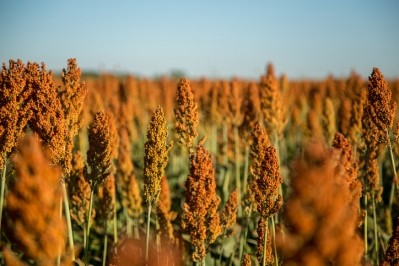Uncertainty remains as feed crop production falls and USDA bumps corn yields

The USDA released updated information about US and international feed crop production and trade Thursday [October 10] in a new World Agriculture Supply and Demand Estimate report.
Overall, the US agency lowered forecast production for wheat, corn and soybeans in 2019/20 and curbed harvested acres for both corn and soybean crops.
WASDE insights
USDA data - corn and coarse grains
Anticipated US corn production for 2019/20 has declined along with exports and corn use in ethanol; however, feed and residual use is expected to increase and lower ending stocks, the USDA said.
Corn production is expected to be 13.78bn bushels - a 20m bushel drop - as lower harvested area offsets a slight yield increase, the department said. Supplies declined with the reduced crop and smaller beginning stocks, but exports fell 150m bushels.
Season-average corn price was boosted $0.20 to $3.80 a bushel, the department added.
Estimated sorghum production fell based on per-acre yield and a smaller harvested area, the USDA said.
Internationally, coarse grain production is forecast to be 1.397bn tons. The outlook includes increased production and trade, while higher corn ending stocks reflect production in Brazil, Canada and the EU.
Corn exports were increased for Russia, though lowered for the US, the department said. Corn imports in 2019/20 have been reduced for Saudi Arabia, Mexico, Venezuela, Cuba and Bangladesh.
USDA data - soybean situation
US oilseeds production in 2019/2020 is forecast at 107.9m tons with smaller soybean, peanut and cottonseed crops somewhat offset by increased canola and sunflower seed production, the USDA said.
Soybean production is expected to be about 3.6bn bushels based on declining yield. Yield was lowered to 46.9 bushels an acre and the harvested area fell to 75.6m acres.
Total supplies in 2019/20 were reduced to 4.5bn bushels based on production and beginning stocks and ending stocks fell as increased soybean crush is anticipated, found the USDA. Season-average price bumped $0.50 to $9 a bushel with soybean meal up $20 to $325 a short ton.
Global production for oilseeds is estimated to be 574.8m tons with production declines for soybeans, sunflower seed and rapeseed, the WASDE report continued. Soybean production fell 2.4m tons to 339m tons based on US production.
Rapeseed production fell based on crops in Canada, Australia, the EU and the US, the department said.
“With lower global oilseed supplies only partly offset by reduced crush, global oilseed stocks are projected at 109.8m tons, down 4.6m,” the department said. “Soybeans account for most of the change with lower stocks in the US only partly offset by increases for Argentina and Brazil.”
USDA data - wheat outlook
US wheat production in 2019/20 anticipates a drop in supplies and use along with increased ending stocks, the USDA said. Total production was reduced 18.5m bushels with imports falling by 15m bushels.
Ending stocks are expected to increase to 1.043bn bushels. Feed and residual use in 2019/20 is projected to be about 140m bushels – an increase on the amount fed last year.
However, exports fell 25m bushels following reduced competitiveness in international markets, while the season-average farm price dropped $0.10 to $4.70 a bushel.
Globally, higher beginning stocks have offset production declines for 2019/20 and total supplies increased slightly, the USDA reported. World production is down 0.3m tons based on production in Australia, the US, Canada and Serbia even as crops expanded for the EU and Turkmenistan.
International exports in 2019/20 are forecast down about 1.2m tons led by Australia, while imports declined 1.1m tons based on the US, Turkmenistan, Venezuela and Kyrgyzstan, the department said. With supplies rising and use declining, global ending stocks are raised 1.3m tons to a record 287.8m, added the USDA report.
Despite the USDA reducing forecasts on US corn and soybean production, there continues to be uncertainty in the US about the number of acres planted in relation to feed crops and potential yields and production.
Another view
An alternative crop production report, The Atlas Insights, released by Indigo Ag. Inc. forecast lower production levels for both corn and soybeans than the USDA.
The Atlas Insights report is established using models developed with machine learning technology and through assessing data sets, weather and satellite imagery, said Barclay Rogers, VP of business development for GeoInnovation at Indigo.
He told FeedNavigator:
“We’re not trying to outguess the USDA – that’s not the purpose of our activities.
“We’re trying to understand, as best as we can, given the data available, what the expected production numbers are for US corn and soybean production in a given year. We’re trying to look at the end of the season and anticipate what the final number will be because, ultimately, that is the direction that the price will go and provide that information to farmers, so they can incorporate that information in their decision making around crop marketing.”
Overall, the company’s forecasting technique estimates total US corn production at 12.7bn bushels with a yield per acre of 161.2 bushels and 86.2m acres planted, Indigo reported.
Soybean production was predicted to be 3.4bn bushels with 45.6 bushels an acre on 75.7m planted acres, the company said.
“It’s been a hard year to be a farmer,” said Rogers.
Challenges that started with delayed planting and a wet spring, have continued as, even with a good growing season, crops have struggled to reach maturity.
“It appears that it made up a lot of ground, but it didn’t make it all the way – when you compare the crop health to historic averages, it’s well below where it usually is at this point,” he said. “That’s fundamentally what is driving the corn yield estimates – we’re getting closer to freeze the crop is going through its lifecycle … and so the question is, ‘How far did they make it before they began to enter into the end of the crop cycle?’”
In an assessment of states that had the largest number of planted crop acres with delayed production – North Dakota, Minnesota, South Dakota and Ohio – most made strides toward crop maturity moving from September to October, reported Indigo. However, Ohio saw the number of delayed acres increase during that period.
“In the Dakotas and Minnesota, for example, they were lagging significantly but they had a good burst, they had a good sprint [in crop development] and helped close the gap,” Rogers said. “But in Ohio and several other places in the Eastern Corn Belt, they’re running out of steam and are starting to fall behind.”
State acres were compared to where they had been in earlier years, he added.
The company also examined several states for their anticipated production compared to a three-year historical average for production and predicted that only Nebraska and Kansas would see an improvement on past corn crops. Ohio, which is expected to see a 40% decline and South Dakota with a 37% dip had the largest drops from earlier years.
Wisconsin was estimated to see a 31% decline in corn production and a 13% drop in soybean production compared to earlier years, Indigo reported.
That forecast supports the picture described by Ken Williams, agriculture agent with Waushara County Extension, University of Wisconsin-Madison.
The state’s corn crop is about two weeks behind owing to delayed planting and cool temperatures, he said.
Fields have “ups and downs” indicating corn that was damaged, he said. “The yield potential is down because of the water.”
Harvest has presented challenges as wet weather has delayed soybean drying and corn silage collection and frost is now a concern as snow is forecast to arrive this week. “Farmers looking at silage harvest for cattle would have hoped for a couple of weeks longer growing season,” he added.
A “killing frost” dries corn intended for silage and makes the ensiling process harder, Williams said. “You don’t have the amount of grain in the end product you normally would, and it doesn’t have the same feed value,” he added.
“Most producers will have enough feed available, the thing in my mind is the quality,” he said. “We had a lot of hay that went up with borderline moisture … quality is not going to be up to what farmers would want –and corn, if it gets frozen, will be lighter weight then corn that matured before it froze would have been.”












